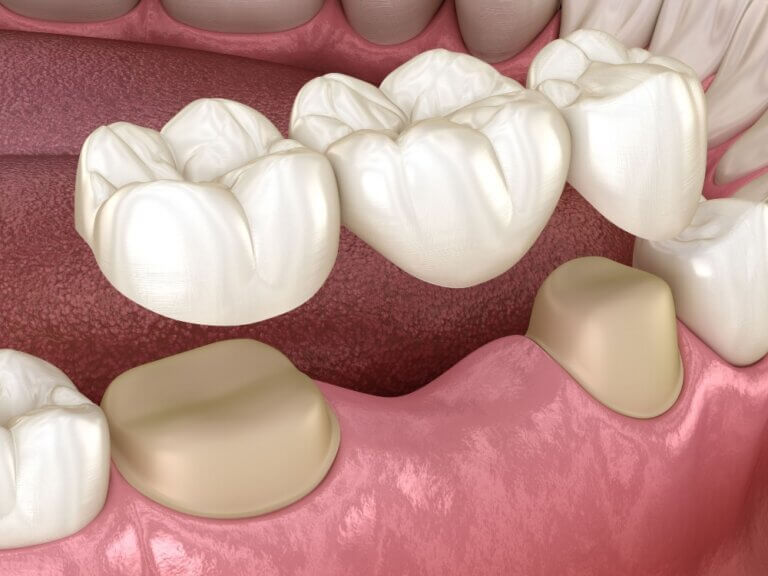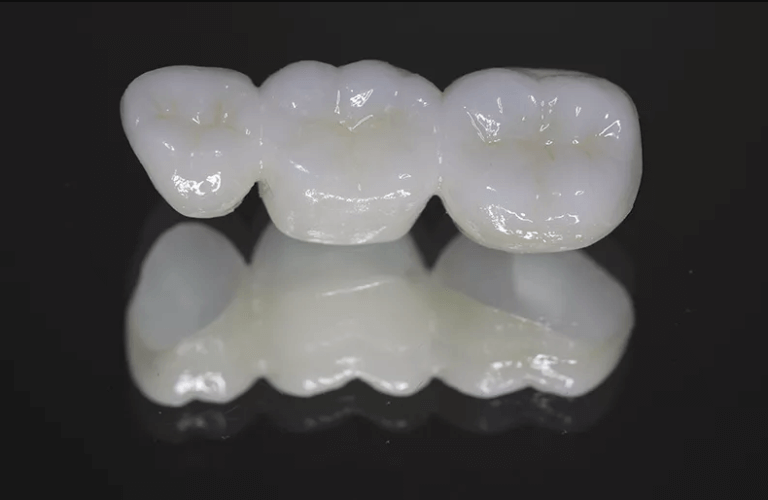Fallen Out Dental Bridge

What Is A Fallen Out Dental Bridge?
A Dental Bridge, also known as a fixed partial denture, is a common solution for filling gaps left by one or more missing teeth. Dental bridges use the two natural teeth on either side of the gap—called abutment teeth—to anchor the false teeth, or pontics, that span the space. These bridges are usually made from durable materials like porcelain, ceramic, or metal and are bonded to the teeth using special dental cement.
However, in some cases, a dental bridge can become loose and fall out. This can be a distressing experience, as it may lead to tooth sensitivity, discomfort, and potential damage to the underlying teeth. If your dental bridge has fallen out, here’s what you need to know about the causes, symptoms, treatment options, and how to manage it until you can see a dentist:
- Why Did My Dental Bridge Fall Out?
- Signs And Symptoms Of A Fallen Out Dental Bridge
- Treatment Options For A Fallen Out Dental Bridge
- Managing A Fallen Out Dental Bridge Until You Can See The Dentist
- Frequently Asked Questions about Dental Bridges
If you have questions about Fallen Out Dental Bridge or other dental problems, please contact us for more information.
Why Did My Dental Bridge Fall Out?
Understanding the reasons behind a fallen-out bridge can help you address and prevent it in the future. Common causes include:
- Tooth Decay: Decay under the bridge can weaken the tooth structure, causing the bridge to loosen or detach.
- Trauma or Injury: A blow to the face or mouth can dislodge a dental bridge.
- Wear and Tear: Over time, the dental cement that holds the bridge in place may weaken.
- Teeth Grinding or Clenching (Bruxism): Excessive grinding or clenching can put pressure on the bridge, leading it to become loose or break.
- Poor Fit: An improperly fitted bridge or inadequate bonding can make the bridge more likely to fall out.
If your bridge has fallen out, avoid reattaching it yourself, as dental cement requires professional application to ensure stability and prevent damage. If you have further questions about a Fallen Out Dental Bridge, please contact us.
Signs And Symptoms Of A Fallen Out Dental Bridge
If a dental bridge falls out, you may notice the following signs:
- Exposed Tooth Structure: The tooth under the bridge may be visible.
- Sensitivity: Increased sensitivity to hot, cold, or sugary foods.
- Pain or Discomfort: Pain may occur when eating or drinking.
- Difficulty Chewing: Biting down may feel uneven or uncomfortable.
- Bad Taste or Odor: A lingering bad taste or smell could indicate decay or trapped food particles.
If you experience these symptoms, contact a dentist as soon as possible to prevent further complications like decay or infection. If you have further questions about signs and symptoms related to a Fallen Out Dental Bridge, please contact us.
Treatment Options For A Fallen Out Dental Bridge
Treatment depends on the condition of the bridge and the underlying teeth. Common options include:
- Recementing the Bridge: If the bridge and teeth are in good condition, a dentist may clean and reapply dental cement to secure it back in place.
- Creating a New Bridge: If the existing bridge is damaged beyond repair, a new bridge may be necessary.
- Root Canal Therapy: If decay has affected the underlying tooth, a root canal may be needed before reapplying or replacing the bridge.
- Extraction and Replacement: In severe cases where the tooth or bridge cannot be salvaged, extraction may be required, followed by replacement options like a dental implant.
Your dentist will assess your case and recommend the most appropriate solution based on the extent of the damage and overall oral health. If you have further questions about treatment options for a Fallen Out Dental Bridge, please contact us.

Managing A Fallen Out Dental Bridge Until You Can See The Dentist
If you’re unable to see a dentist immediately, here are some temporary steps to manage a fallen out dental bridge:
- Keep the Bridge Safe: Store the bridge in a clean container or bag, and bring it with you to your dental appointment.
- Maintain Oral Hygiene: Keep the area clean by brushing gently around the exposed tooth and using warm salt water rinses to reduce bacteria and inflammation.
- Avoid Hard or Sticky Foods: Opt for soft foods and chew on the opposite side of your mouth to minimize discomfort.
- Use Temporary Dental Cement: Temporary dental cement from a pharmacy can secure the bridge for a short period but should not replace professional care.
- Pain Management: Over-the-counter pain relievers like ibuprofen or acetaminophen can alleviate discomfort. Follow dosage instructions and avoid exceeding the recommended amount.
These are temporary measures and should not replace professional dental care. Schedule an appointment with your dentist as soon as possible. If you have further questions about a Fallen Out Dental Bridge, please contact us.
Frequently Asked Questions about Dental Bridges
- Can I reattach my dental bridge at home?
No. Attempting to reattach the bridge yourself can result in improper alignment, damage to the tooth, and increased risk of decay.
- How long do dental bridges typically last?
With proper care, dental bridges can last 5–15 years. Regular dental check-ups are essential for monitoring their condition.
- Is a dental implant a better option than a bridge?
Dental implants are a durable alternative and do not rely on surrounding teeth for support. However, suitability depends on factors like bone density and personal preference.
- Is a fallen-out bridge a dental emergency?
While it may not require immediate attention from a dentist, it’s important to see your dentist as soon as possible to prevent further complications.
If you need assistance with a fallen out dental bridge or have additional questions, please contact us at Atlas Dental for more information. Our experienced team is here to help you with your dental health needs.

